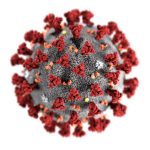By Nathaniel Weixel, THE HILL, 08/10/20

© Getty Images
Global coronavirus cases topped 20 million, according to Johns Hopkins University data, with the United States, Brazil and India accounting for more than half of those infections.
The death toll from COVID-19 has eclipsed 730,000 people, with more than 160,000 of those in the U.S.
The total number of infections and deaths is likely undercounted, however, due to issues with testing.
The rate of infection has increased dramatically since the first deaths from the novel coronavirus were reported. It took about six months for the world to reach 10 million infections by the end of June.
Doubling that number took about six weeks.
Among the 20 countries most affected by COVID-19 in the world right now, the U.S. has the fourth-highest number of COVID-19 deaths per 100,000 people, ranking behind only the United Kingdom, Peru and Chile.
Globally, according to Johns Hopkins data, the U.S. is 10th, ahead of some of Europe’s hardest-hit countries, such as Spain, Italy and Sweden, which have since taken control of and substantially slowed the virus’s spread.
Countries are grappling with different levels of infections, and there’s no single unified method of dealing with them. Some countries already dealt with a wave and may be seeing a resurgence, while others have yet to see infections peak.
Some countries are reintroducing strict containment methods, while others are relaxing restrictions.
In the U.S., some governors responded to spikes in June and July by implementing mandatory statewide mask policies and reimposing a number of restrictions. Other states, however, have largely kept nonessential businesses open despite the summer uptick.





